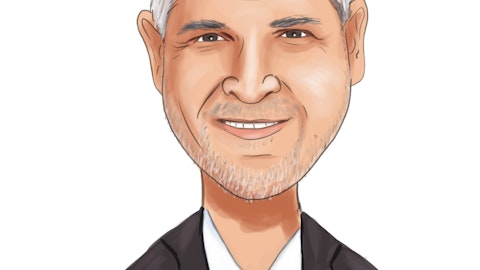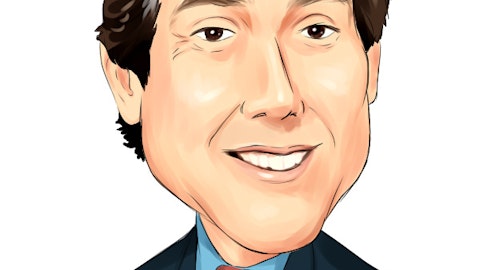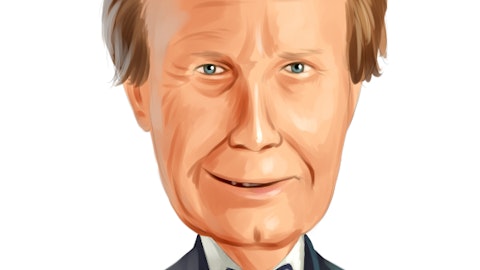Scott Searle: Great. And if I could just lastly follow up. In terms of the guidance, very strong December quarter. Looks like you’re guiding kind of in line with where the first half is. You guys have tended to be a little bit conservative on that front historically. And it sounds like RDOF starts to kick in, in the second half of calendar ’23. So I’m wondering what kind of visibility do you have in the near term, given that your book-to-bill has been running over one? And what are some of the key elements and swing factors as we’re looking in the first half year? And should we basically been kind of very early, but be expecting a little bit of pick up as we get into the back half of calendar ’23? Thanks.
David Gray: Yeah. So I mean, as far as visibility is concerned, roughly 80% of our coming quarters revenues are coming out of backlog. However, it’s not as quite as simple as it sounds because there are some big projects in there and the timing of the revenue recognition associated with those projects can be somewhat dynamic. So there’s always a give and take there. But I think we feel good about the rest of the year, and I think that’s reflected in our guidance adjustment.
Scott Searle: Great. Thank you.
Operator: Thank you. One moment for our next question. And our next question comes from the line of Erik Suppiger from JMP Securities. Your question, please.
Erik Suppiger: Yeah. Thanks for taking the questions. Congrats on a good quarter. Can you talk a little bit about some of the competitive dynamics with Huawei? Was that part of the factor of why your international was particularly strong this quarter?
Pete Smith: Well, we would — we all like to name specific competitors, but that’s the large competitor in the script that we alluded to. In part, the share gain in India, I would say, Huawei contributed to that. And we put together the script and our story on Monday and then on the 30, the Huawei restrictions came out from the Department of Commerce. So we haven’t fully digested. It’s going to be more favorable for us, but we’ve — I think we said we have $60 million of funnel, and we’re starting to execute on that. So we think that’s a favorable trend and the restrictions that were announced on January 30. We’ll give us some time to figure out if that’s — it’s either new worst, it’s neutral. If it’s going to be positive, we’ll be able to figure it out over the next 90 to 180 days.
Erik Suppiger: Okay. Very helpful. Just talk a little bit about kind of the play between fiber and microwave, any updates there in terms of kind of general adoption trends, one versus the other?
Pete Smith: Yeah. I think the share is about steady at the competitive front between fiber and microwave. And what I would point to in terms of making Aviat more robust with respect to the fiber competition is our multiband extended distance, and our multiband vendor-agnostic innovations allow us — the vendor agnostic allows us to work with third-party microwave and the extended distance, that’s explicitly designed to make us more competitive versus fiber. But overall, we have a chart in our investor presentation, and I wouldn’t say that there’s any share shift between fiber and microwave at this point in time.
Erik Suppiger: Okay. Last question. North America grew, I think, a couple of percent. Are you seeing impact from macro-economic? Is that playing much of a factor there or how are you thinking of the North American business from an economic perspective?





